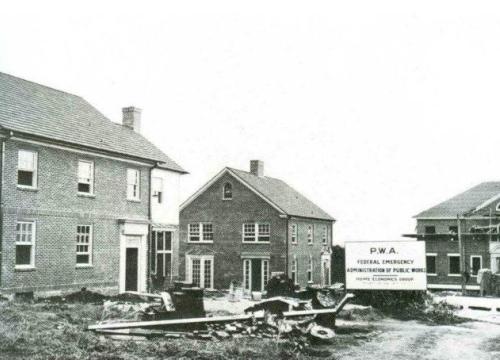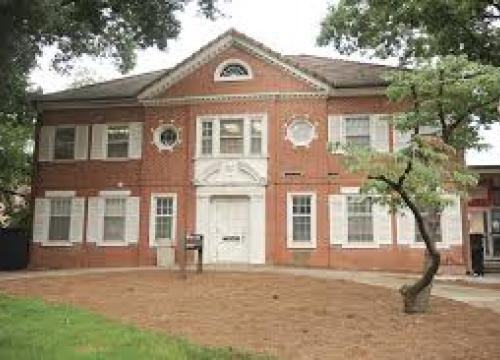McPhaul Center – UGA 1652, 1246, 1247, 1248, 1249 (1940, 1969 addition; Category 2). In 1927, the Rockefeller Foundation provided funds to the University for establishment of a nursery school as part of the child development program of the School of Home Economics. In their New Deal development on South Campus using Public Work Administration funds, Richard Driftmier and Roy Hitchcock created a small complex of buildings around an open courtyard to house the nursery school and four home management laboratories.
The buildings were constructed in 1939, and the nursery school moved into the complex in 1940. The four home management laboratories were designed as small residences. Students majoring in home economics were required to live in one of the residences for one quarter of the school year. The complex was later named after Margaret McPhaul, who served as director of the nursery school from 1937 until 1961. A large one-story building was constructed for the center in 1971 southeast of the complex and linked to the 1930s nursery school building.
The five 1930s buildings are organized with the former nursery school, now the Aspire Clinic, at the head of the quadrangle and with two of the home management laboratory buildings to each side. The two story brick buildings are designed in Colonial Revival style with the character and appearance of 1930s era residences. The nursery school building has a formal symmetrical facade, with a finely detailed central entrance. The four residences are simpler in design and asymmetrical, with small side wings.
The buildings retain their original wood double-hung windows, Colonial entrance door surrounds (each different), wood cornices, wood clapboard, copper gutters and downspouts, and tile roofs. The buildings currently house College of Family and Consumer Sciences programs, including the Aspire Center, Family Science Center, Housing and Demographics Research Center, and Consumer Research Center. The complex is significant to the New Deal development at the University as well as with the growth of the home economics program. The buildings retain integrity and appear to contribute to a National Register-eligible historic district. They are assessed as Category 2 resources.
The adjacent 1971 building is a large, low rectangular building with an entrance facing the parking lot to the south. It has brick walls with a stucco overhang at the top. The building appears to house the nursery school and is surrounded by outdoor play areas. Though connected to the 1930s nursery school building with a first floor link, the 1971 building has little physical or aesthetic relationship with the 1930s complex.
Landscape Resources
The landscape associated with the College of Family and Consumer Sciences Complex features paved walks, turf lawn, foundation plantings, ground covers, and mature shade and ornamental flowering trees. The buildings are arranged to form a streetscape, which is reinforced by the landscape elements. The composition of landscape features is generally historic and complements the architecture and spatial layout of the buildings.


